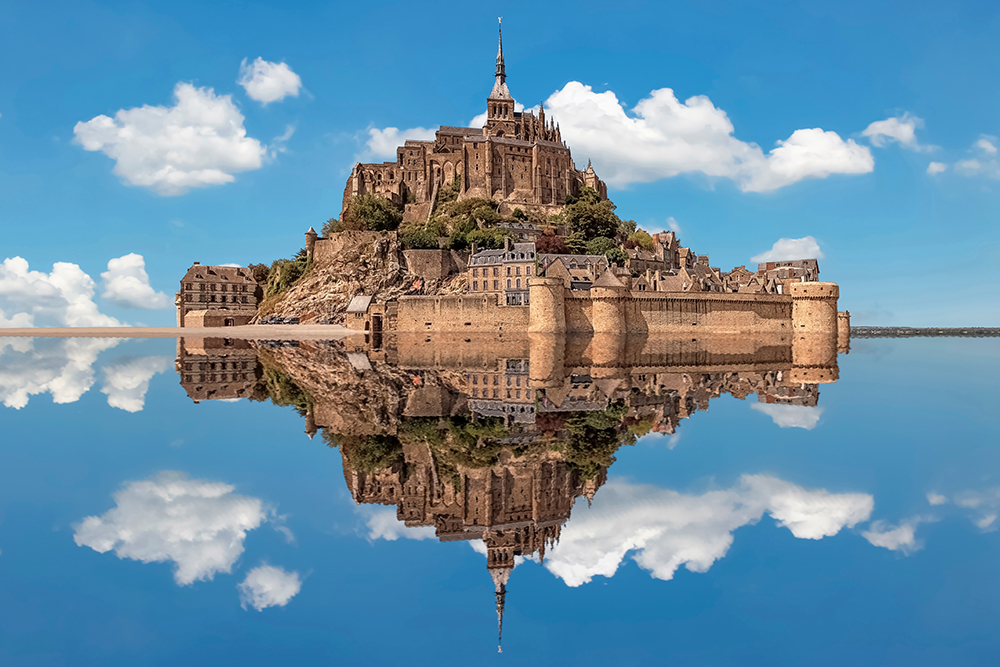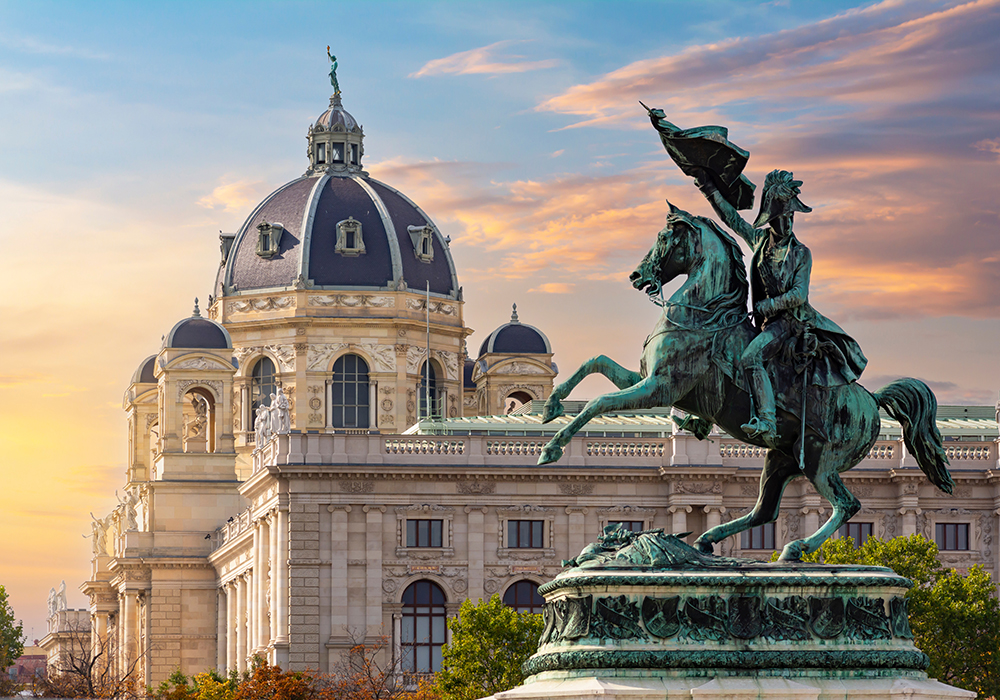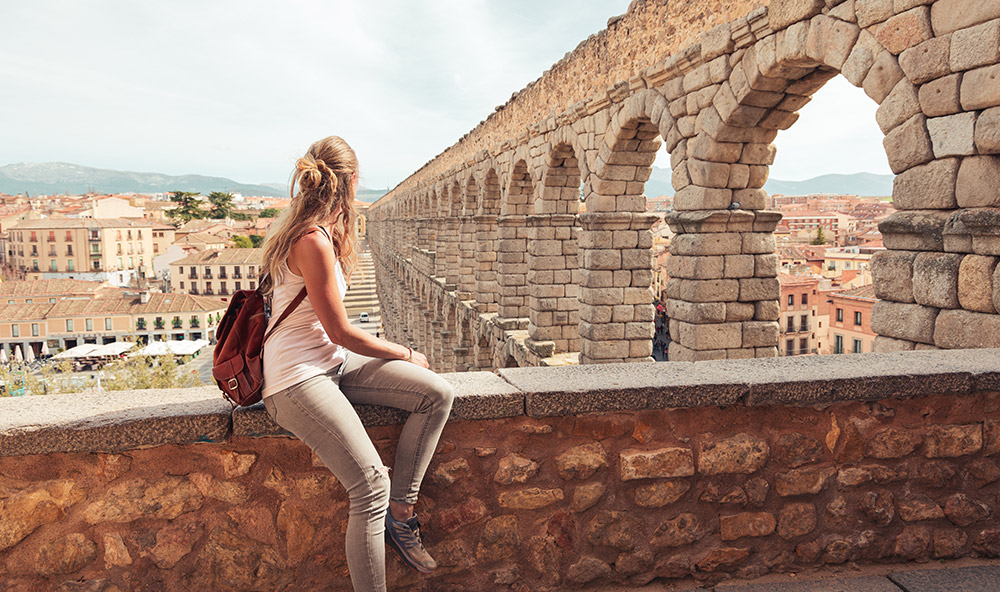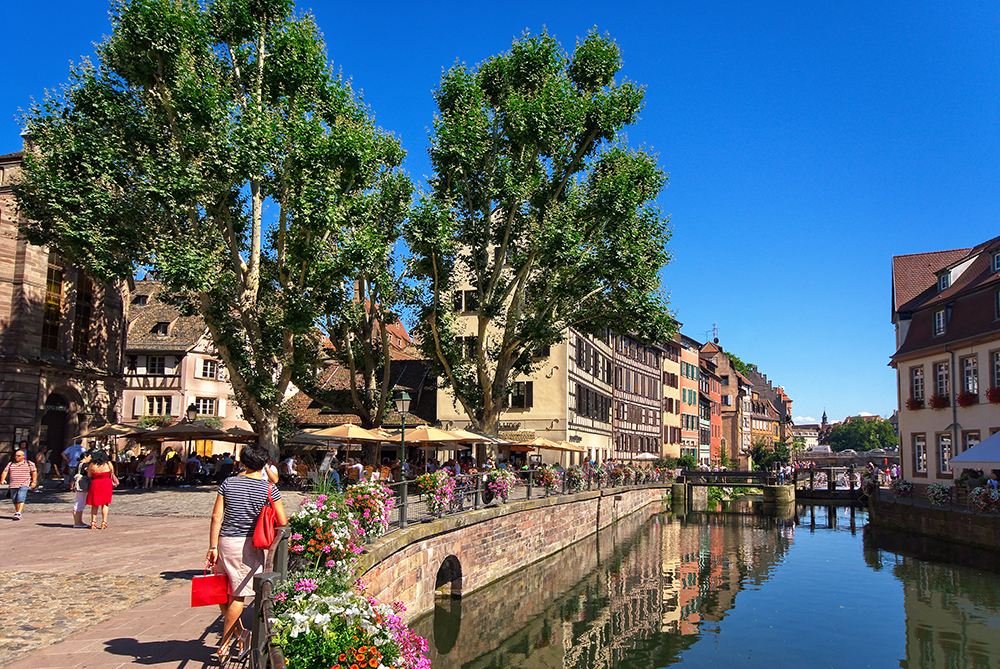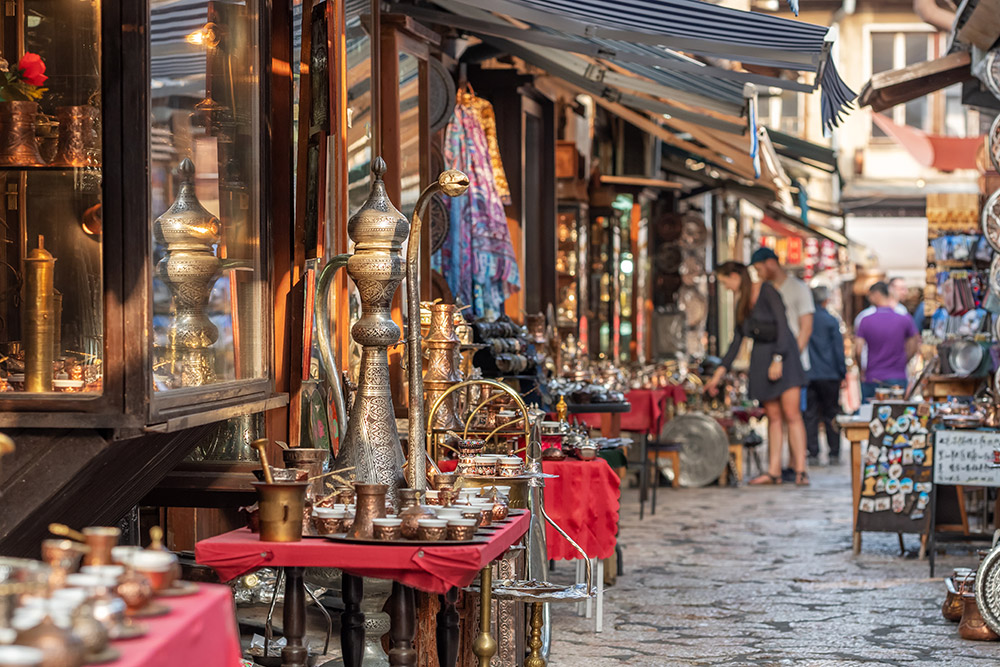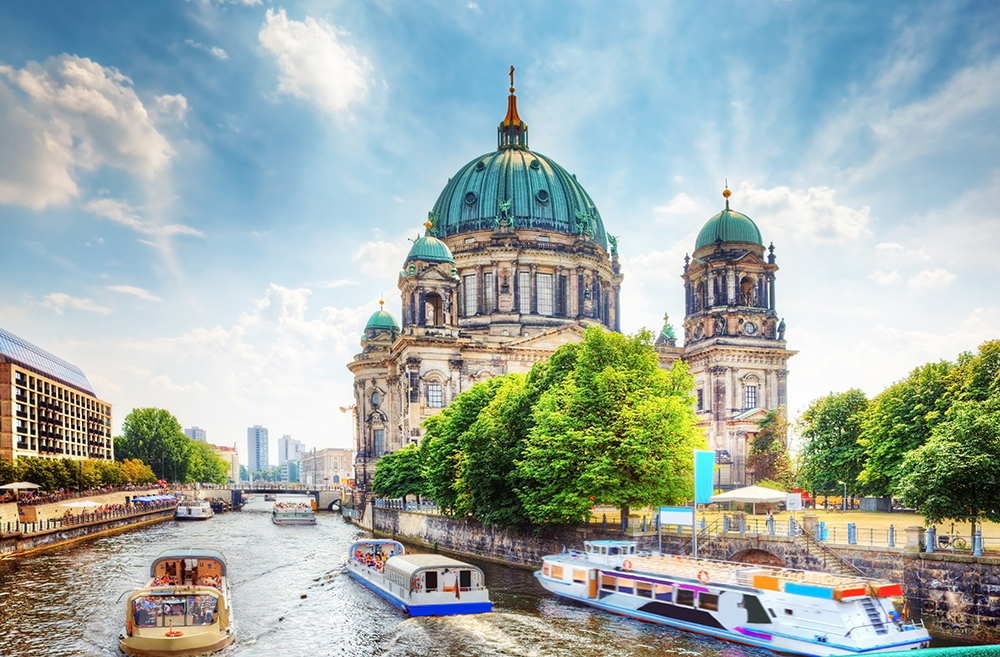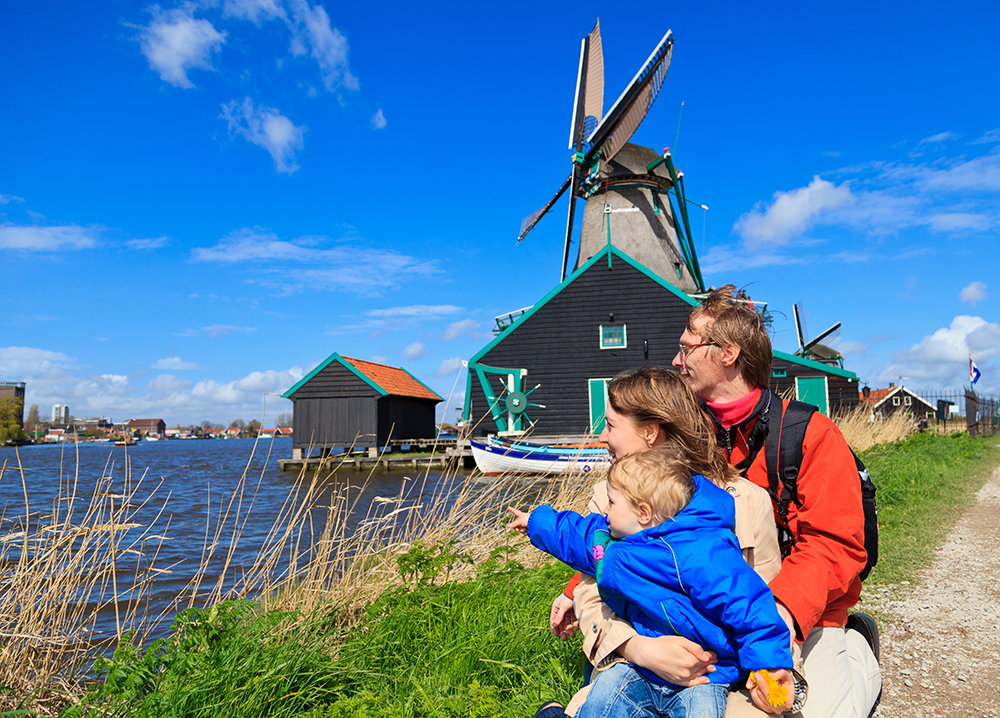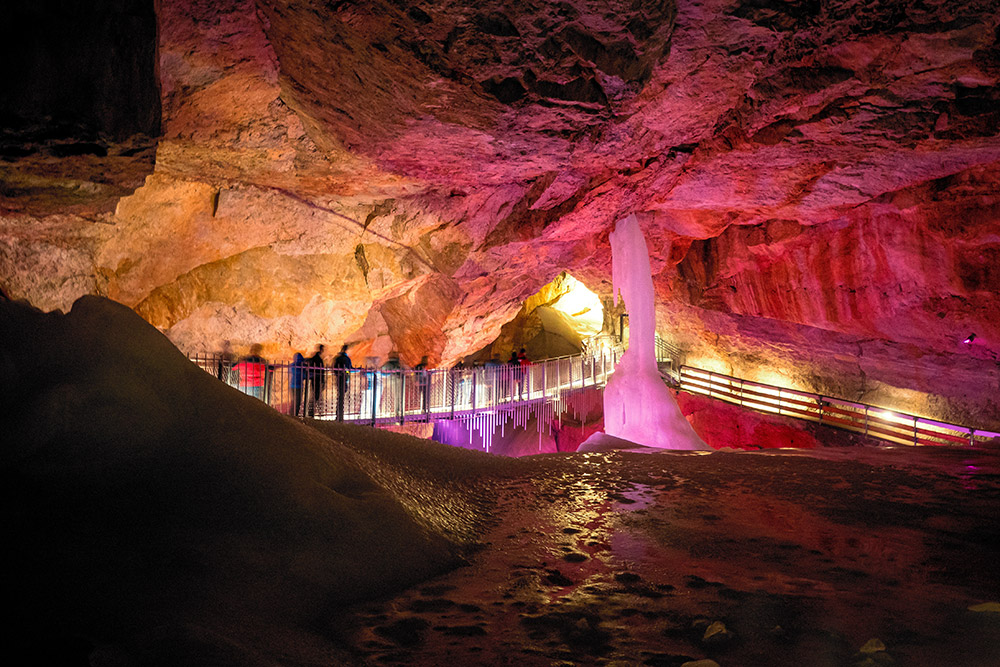Normandy and Brittany have a plethora or historical treasures, beautiful nature spots and cultural riches that draw in people who seek a deeper connection with the past and a look at France’s diverse traditions. Both regions offer great cultural tradition, filled with ancient legends, as well as culinary delights and lively festivals which add to the charm of the area. The picturesque countryside, with its castles, churches and medieval architecture is inviting and fascinating. A visit to Normandy and Brittany provides a unique opportunity to experience historical moments ranging from ancient legends to important wartime events, while indulging in the scenic beauty and cultural richness of the area. It is a journey through time and tradition, which provides travelers with a deeper understanding of France’s diverse history and an opportunity to accumulate unforgettable memories amid landscapes steeped in legend and heritage.
Popular itinerary for a historical tour from Paris to Normandy adn Brittany:
The proposition is for a circular tour that begins and ends at Charles de Gaulle airport in Paris. This 10 day tour includes places that have an important impact both in terms of history and art. The tour is about 800 miles long.
Day 1 – Paris – Auvers-sur-Oise – La Roche Guyon- Vernon
Take route N104 from Charles de Gaulle Airport and drive about 25 miles to Auvers-sur-Oise, a little town that was perpetuated in the history of art because of Vincent Van Gogh who lived there at Auberge Ravoux (also known as Van Gogh House) during the last months of his life. He arrived in 1890 seeking peace and quiet in this picturesque countryside town which inspired some of his most famous paintings, such as the local church, the surrounding wheat fields, and Dr Gachet’s house. Auvers, the setting of the last chapter of Van Gogh’s tumultuous life, is a must for art lovers and art historians. The cemetery where Vincent and his brother Theo are buried is at a short walking distance for the town and is a moving testimony to the love of the 2 brothers as well as to the memory of the brilliant artist.
From Auvers-sur-Oise, take the D27 and the D14 and drive about 40 miles to La Roche Guyon, a medieval clifftop castle overlooking the Seine River. This strategic spot, which allows for an insight into feudal history, is also testimony to its military importance. The castle’s underground caves were used during World War II and conjure up the story of the resistance against the Nazis. The amazing gardens and terraces, carefully planned in the 18th century, show the importance of landscape art during that era.
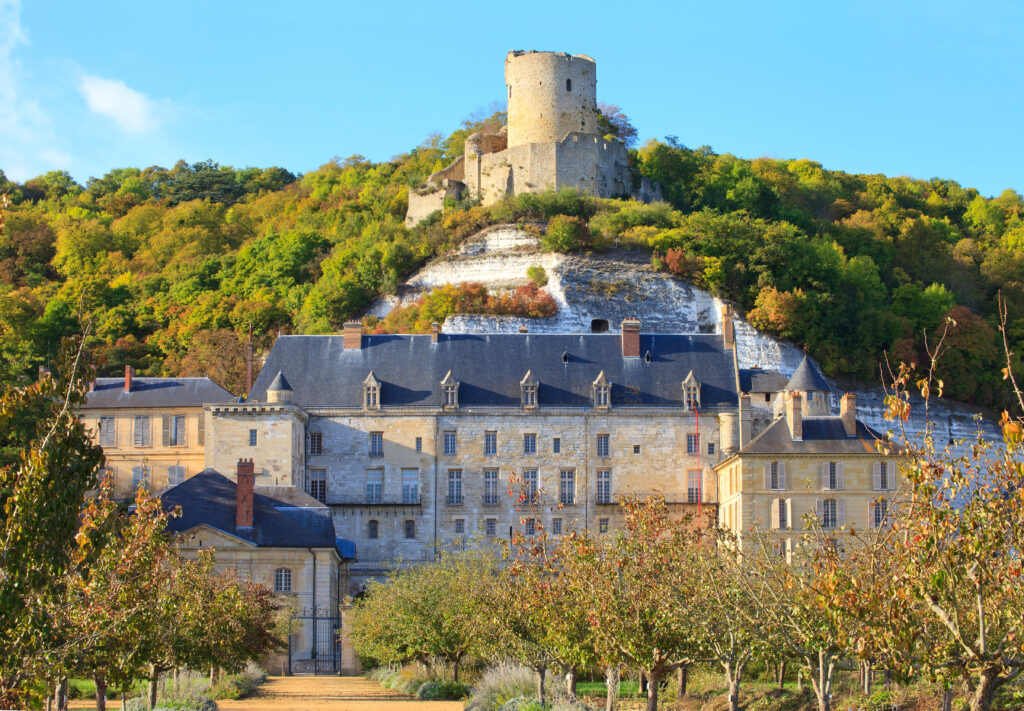
Drive the short distance (8 miles) on the D313 to Vernon.
Overnight in Vernon
Day 2 – Vernon – Giverny – Chateau Gaillard – Les Andelys
Drive 4 miles on the D5 to Giverny for a visit to Claude Monet’s house and gardens which are a testimony to the artists creative genius and to his love of nature. In the house you can see where he lived and worked. You will see the collection of Japanese prints, the period furniture and the kitchen, and get an insight into the family’s daily life. The beautiful gardens are in 2 parts: the flower garden and the Japanese water garden, and it is as if the landscapes are erupting from Monet’s canvases and reflecting the changing colors of his paintings. When you cross over to the Japanese garden, you enter the peaceful water garden, where the water lilies float on the pond, surrounded by weeping willows and exotic plants. Every corner of these gardens reflects Monet’s passion to capture the essence of nature’s beauty, providing the delightful, peaceful sights that have inspired some of the world’s most beloved works of art.
Take route D313 and D1 from Giverny to Chateau Gaillard (about 25 miles). Chateau Gallard, which proudly overlooks the Seine River, was a formidable fortress and a fine example of middle age architecture. It was built by Richard the Lionheart in the 12th century during the Anglo-French wars and is a symbol of power. The fortress was strategically placed on the cliff on the bend of the Seine and its defensive advantage was unique. It was very avant-garde for the period, with fortifications such as concentric walls, round towers and a triangular layout. The views from there over the Seine Valley provide a historical perspective of Chateau Gaillard’s strategic importance. Although you now only see its ruins, it remains an awe-inspiring reminder of the Middle Ages and of the architectural inventiveness of feudal Europe.
Overnight in Les Andelys.
Day 3 – Les Andelys – Chateau de Vascoeuil – Rouen
Take route D1 to Chateau de Vascoeuil (about 20 miles). Vascoeuil is in the middle of the Normandy countryside. A rich fabric of stories intertwined with renowned artists and cultural heritage make up this magical place, which dates back to the 15th century. Today, the castle is not only a testament to medieval architecture but also a vibrant cultural center. It is an open-air museum with contemporary art exhibitions, featuring works by influential artists such as Salvador Dalí, Juan Miró, and Jean Cocteau. The grounds of the castle, beautiful gardens with sculptures dispersed throughout, make for a harmonious combination of history and art.
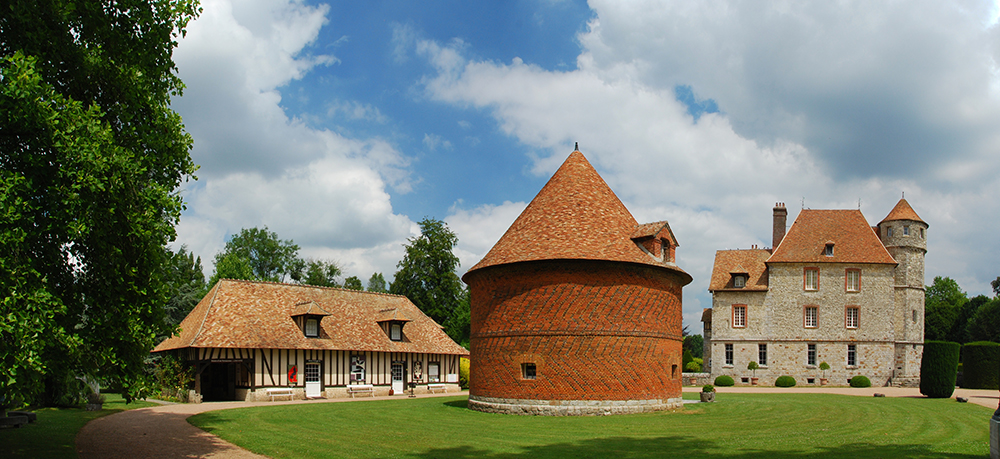
Drive along route N31 to the city of Rouen (30 miles). Rouen sit on the Seine River in the heart of Normandy and not only has a great deal of history and art but also has its own private heroine! Its centuries long history includes the story of Joan of Arc, the young peasant girl who managed to get together an army and valiantly fought against the English in the 100 year war. It was in Rouen that Joan was put on trial by the English and consequently burned at the stake.
Overnight in Rouen. Go and take a look at the illuminated Cathedral after nightfall!
Day 4 – Rouen
Take a walk in the picturesque old city with its narrow lanes, its half-timbered houses and its lovely squares. Rue du Gros Horloge is a lively pedestrian street that crosses from the breathtaking Cathedral to the market square Place du Marche where Joan of Arc was burned at the stake. The historical square is surrounded by cafes and shops. The Rouen Cathedral is the epitome of Gothic architecture and was of great inspiration to Claude Monet. The façade is breathtaking as are the stained-glass windows on the interior of the vast cathedral. Do not miss it! Richard the Lionheart, King of England was buried in the Abbey of Fontevraud after his death in 1199, but his heart was placed in a lead box and brought to be buried in the Rouen Cathedral and you can see the tomb in the ambulatory.
Not far from the Cathedral, just off the pedestrian street you will find the neo-Gothic Palais de Justice, a 16h century building that was refurbished in the 19th century. The historical building, which was once the Parliament of Normandy, is now the court of justice. Go back to the pedestrian street to the Gros Horloge, a 16th century astronomical clock which is a symbol of Rouen’s historical and architectural tradition. The decorated mechanism is a masterpiece of Renaissance art. The sheep at the end of the clock hand symbolizes the source of Rouen’s income in bygone days.
At the end of the street, you will reach the Place du Vieux Marche with its unique church named after Joan of Arc, a gem of modern architecture. Its contemporary design and stained glass windows tell the story of Joan of Arc.
Make the most of the local food in one of the many restaurants, cafes, chocolate shops and patisseries. Taste some of the local specialties such as cider, apple-based desserts and some of the many Norman cheeses, such as Camembert.
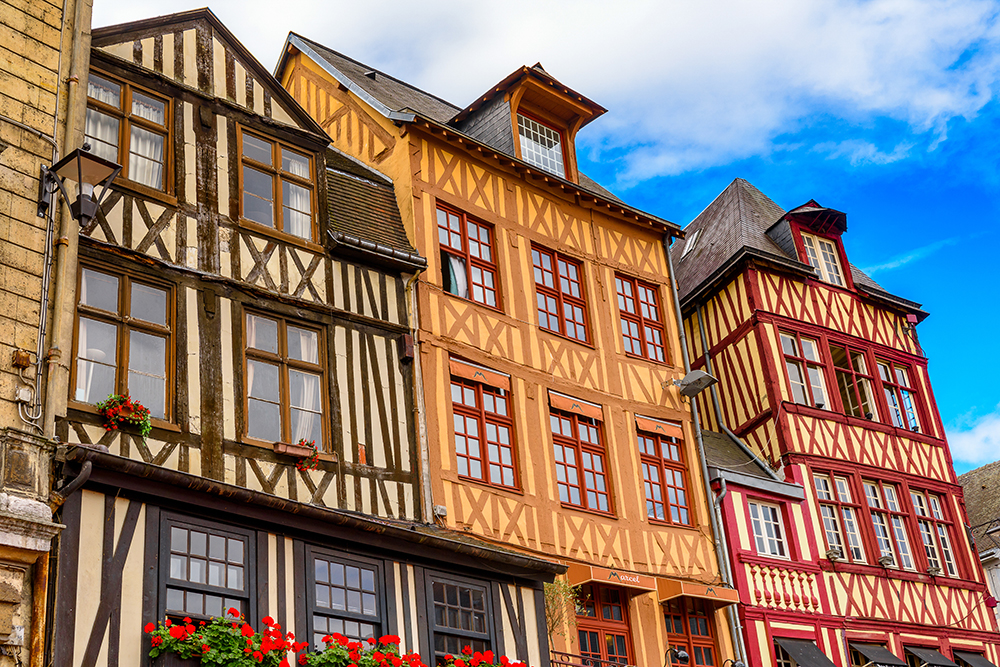
There are several museums in Rouen:
The Musee des Beaux Arts has a large collection of paintings, sculptures and decorative art dating from the Renaissance to the 20th century. You will find works of famous artists such as Caravaggio, Rubens, Delacroix, and Rubens there.
The Joan of Arc Museum tells the story of the French heroine’s life, her trial and the important role of the city of Rouen in her story. Al this is presented via a multimedia display that includes historical objects and documents.
Musee Le Secq des Tournelles is a fascinating museum on the site of what was once a 16th-century church. It has a collection of wrought ironwork items, including decorative objects, tools, signs, weapons and architectural elements from different periods.
The Musee de la Ceramique, which showcases Rouen’s ceramic heritage, has an impressive collection of ceramics and pottery from the 19th century to the 20th century. The museum is located near the tower where Joan of Arc was held during her trial.
The Musee d’Histoire Naturelle has exhibitions related to geology, zoology and paleontology as well as collections of fossils, minerals and taxidermy.
Overnight in Rouen.
Day 5 – Rouen – Etretat – Honfleur
Take route A150 and A29 to Etretat (about 55 miles). Etretat’s breathtaking cliffs, natural limestone arches and amazing views that inspired many an artist, are a must! The mesmerizing limestone cliffs which stretch along the coastline of the English Channel have been immortalized in countless paintings, including those of Claude Monet and Gustave Courbet. Etretat’s natural arches, especially the impressive “needle” and the famous “elephant trunk”, sculpted by the forces of nature, are geological wonders which attract visitors who come to look at them from various viewpoints along the coast.
Étretat is associated with several notable people. Renowned French painters who were inspired by the dramatic landscapes came to paint, the most famous of whom was Claude Monet who produced a series of paintings of the cliffs and natural arches of Etretat . Acclaimed French author Guy de Maupassant spent time in Étretat and impressions of the coastal town often appear in his works. Maurice LeBlanc, creator of the iconic gentleman-thief Arsène Lupin, lived there, and the views and atmosphere of Etretat inspired his writing. His house has become a museum.
From Etretat, it is worth making the short trip (12 miles) to the beautiful Palais Bénédictine (part of what was once a monastery) in Fécamp. This is where Bénédictine liquor is made. The 19th century building houses the factory, as well as the museum that tells the story of a 16th century monk who specialized in alchemy and used a mixture of exotic spices to create the famous liquor and provides explanations of how it is made.
Take route A29 from Fecamp to Honfleur (30 miles). On the way, you will cross the amazing cable-stayed road bridge that spans the estuary of the Seine River. The bridge is a beautiful modern architectural wonder with picturesque views.
Honfleur is a port town steeped in history. and art. Look at the colorful buildings around the Vieux Bassin, an old harbor that reflects the city’s rich maritime heritage. Go to see the unique St Catherine Church, a wooden wonder created by local shipbuilders in the 15th and 16th centuries, and take a look at its high ship-like ceiling built as a tribute to Honfleur’s sailors. Walk along Quai Sainte-Catherine, with its numerous inviting galleries and boutiques. The Eugène Boudin Museum displays the works of the painter who encouraged Claude Monet to paint. Charming Honfleur is a town in which to wander amid the historical landmarks, from the wooden church to the salt warehouses.
Overnight in Honfleur
Day 6 – Honfleur – Deauville – Caen
Drive about 12 miles on route D288 to Deauville, a seaside town with a rich history woven into its elegant facade. It all began in the 19th century when the Duke of Morny created a luxurious seaside resort to attract Parisian high society. Deauville became renowned known for its glamorous atmosphere, luxurious villas and luxurious hotels and turned into a magnet for the wealthy. The promenade along the beach became a symbol of fashionable leisure. The town’s racetrack, inaugurated in 1864, brought an air of luxury with prestigious horse races. Deauville’s architectural splendor is characterized by its Belle Epoque villas and the famous Casino Barrière.
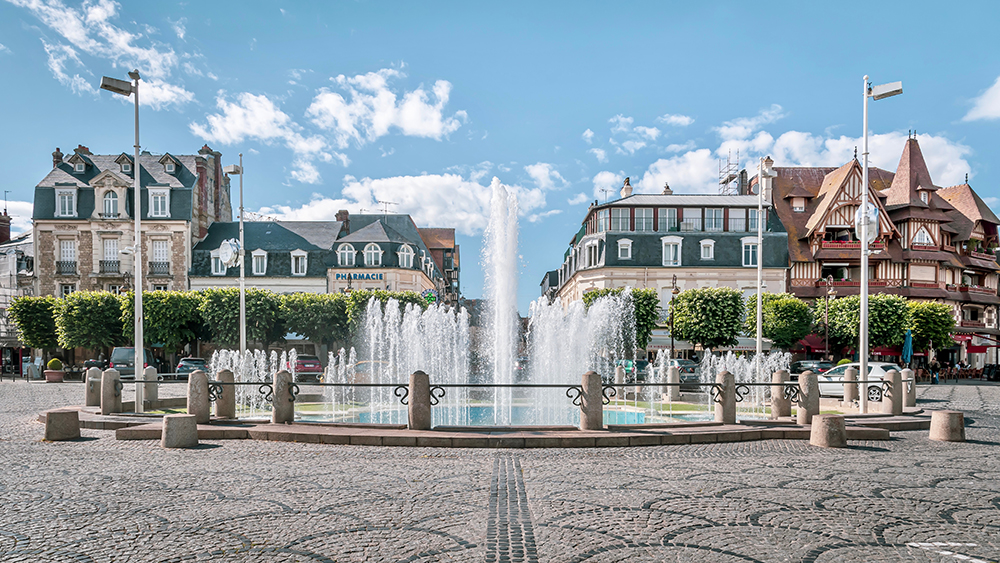
Continue along the A132 and A13 to Caen (45 miles). The Memoral de Caen Museum is a powerful testimony to the destruction and influence of World War II and to the continuous search for peace. The museum, originally established immediately after the war, has now been moved to an impressive new site.
Drive on the A13 to nearby Bayeux (about 2 miles) which houses the famous Bayeux Tapestry, a 230 foot embroided cloth dating back to 1077. The tapestry tells the story of the events that led to the Norman invasion and William the Conqueror’s conquest of England which culminated in the Battle of Hastings. The tapestry is a stunning fusion of art and history, providing intricate details of medieval life, warfare and everyday activities. The vivid scenes and Latin inscriptions offer valuable insights into the military strategies, customs and clothing of the period, as well as depicting William the Conqueror’s victory and King Harold II of England’s defeat. The tapestry is of great historical significance as a primary source for understanding the Norman Conquest and the events that shaped the history of England.
Overnight in Bayeux.
Day 7 – Bayeux – Arromanches – Overlord Museum – Colleville sur Mer American Cemetery – Pointe du Hoc – Bayeux
You will spend today on Normandy’s D-Day Landing Beaches. Operation Overlord, the largest amphibious invasion in history, was launched on June 6th 1944. Allied forces, consisting of soldiers from the United States, Great Britain, Canada and other countries, stormed five beachheads in Normandy in a heroic operation that initiated the liberation of Europe from the Nazis. Despite the formidable German defenses, the courage and sacrifice of the Allied soldiers led to the eventual success of the invasion, a decisive turning point in the war that led to the liberation of France and the collapse of the Axis powers.
Take the 516D to Arromanches-les-Bains (9 miles) to see where the Mulberry Harbor was built by the Allies. The 360 Circular Cinema sits atop a hill looking down on the remains of the artificial floating harbor. The circular cinema presents 360 degree a vivid immersive experience that recreates the intensity of the D-Day landings with archival footage and personal stories.
The D-Day Landing Museum is down by the harbor in a state-of-the-art building where the exhibits delve into the construction of the port and presents a comprehensive collection of engineering measures, weapons and personal belongings of soldiers. The museum, which shows the engineering marvel that assisted in the D-Day landings, via immersive displays and historical insights.
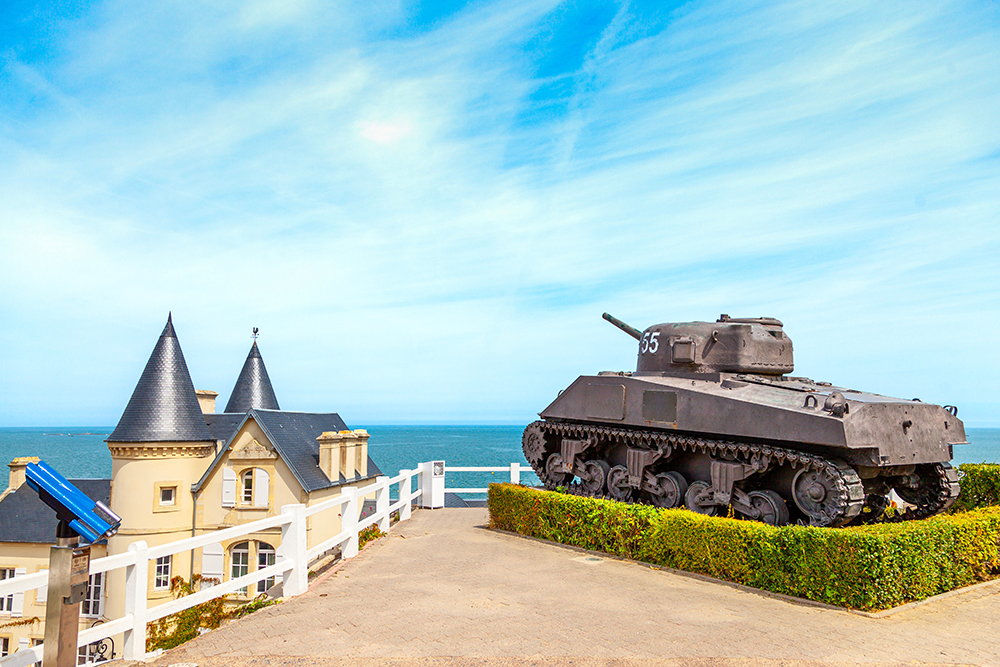
The American Cemetery in Colleville-sur-Mer is at a 12-mile drive on the D514. It serves as a poignant memorial and honors the courage and heroism of over 9,000 soldiers who fell in the various stages of the landing. On the immaculately manicured lawns, the rows and rows of white marble tombstones, Crosses interspersed with Stars of David, are a tribute to the war heroes. The visitor center presents historical exhibits, videos, images and voices telling the stories of the soldiers who participated in the campaign.
The Overlord Museum, a mile away from the cemetery, provides a comprehensive, immersive experience. It has a huge variety of military equipment, vehicles, uniforms and personal belongings, all of which connect the visitor to what those who took part in the Normandy campaign underwent. The museum also uses multimedia presentations and audio-visual elements to create a vivid, fascinating account of the historical events.
Take route D514 for about 20 miles to Pointe du Hoc. Pointe du Hoc was a German stronghold overlooking the English Channel, fortified with heavy artillery that presented a threat to the landing beaches The task of neutralizing that threat fell to the US Army’s 2nd and 5th Ranger Battalions, who embarked on a perilous attempt to scale the steep cliffs under heavy enemy fire. The landscape at Pointe du Hoc bears the scars of war, with shell craters and remnants of bunkers and gun emplacements still visible. The site is preserved as a memorial, allowing visitors to explore the bunkers, trenches and bomb craters while learning about the heroic actions of the Rangers.
From Pointe du Hoc, take the E46 and drive back to Bayeux (25 miles).
Overnight in Bayeux.
Day 8 – Bayeux – Saint-Lô – Mont-Saint-Michel – Saint Malo
Take route D572 to Saint-Lô, a historic town that bears witness to the damage of World War II and is a symbol of resilience and reconstruction. During the war, Saint-Louis suffered extensive damage due to heavy bombing and in June 1944, 95% of its buildings were destroyed. Nonetheless, Saint-Lo became the Allied forces’ center of command.
Drive on route A84 to Mont Saint Michel (about 55miles). Mont Saint Michel is a mesmerizing combination of natural beauty and masterpiece of medieval architecture wonder with a rich history. The monastery, with its intricate Gothic architecture, cloisters and crypts that testify to centuries of religious significance and architectural ingenuity, rises majestically above the village below. Visitors can explore the monastery halls and chapels and get an amazing panoramic view of the surroundings, while imbuing the spiritual aura and historical heritage within its walls. The charming streets leading up to the monastery is full of souvenir shops and cafes. Mont-Saint-Michel is particularly renowned for being a tidal island which turns into an island at high tide and this adds to its mystique and charm.
Take routes 176N and 137D from Mont Saint Michel to Saint Malo (35 miles). Saint Malo, a historic walled city on the coast of Brittany, France’s northwesternmost region, oozes with a captivating mix of maritime heritage, medieval charm and rich history. Renowned for its ramparts, sandy beaches and seafaring heritage, Saint Malo is also a testament to resilience and restoration after great wartime destruction. The fortified walls that surround the old town were fastidiously rebuilt after World War II and a walk along them provides breathtaking views of the sea and surrounding coastline. Within the walls there is a complex network of streets lined with charming cafes, boutiques and restaurants,that call for visitors to soak in the medieval atmosphere.
Accommodation in Saint Malo.
Day 9 – Saint Malo – Dinan – Fougeres – Chartres
There is a long drive today so it is best to leave Saint Malo early. Drive on routes D137 and E401 to Dinan (21 miles), a picturesque well preserved medieval town with a rich history. Dinan’s cobbled streets, wooden houses and ramparts, which overlook the river Rance, create a magical atmosphere that takes visitors back in time. The heart of the town is within the perfectly preserved impressive stone walls that date back to the 13th century. Absorb the charm of this little town on the steep, iconic, picturesque Rue du Jerzual which is full of medieval buildings, craftsmen’s workshops, boutiques and little cafes, that winds its way down the hill. You can see Dinan’s architectural heritage and get a glimpse into its religious and military heritage at the Gothic Saint Sauveur Basilica and the impressive Dinan Castle.
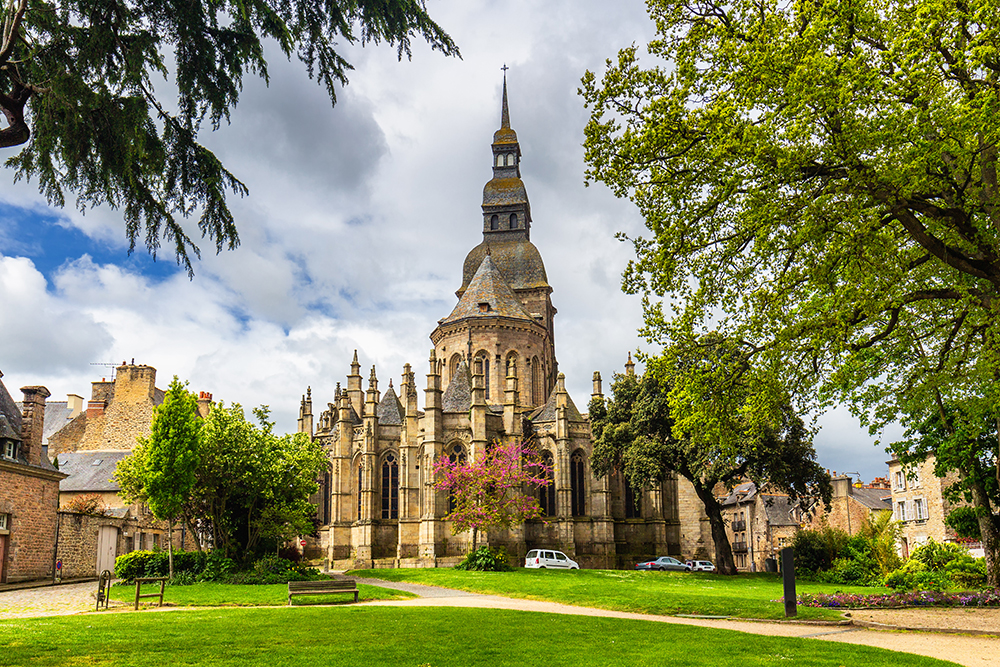
Take route 176N and 155D to Fougeres (about 50 miles), a captivating town, steeped in history and crowned by the impressive Fougères Castle, one of Europe’s largest medieval fortresses comprising ramparts, towers and courtyards. The castle, which dominates the skyline and offers panoramic views of the surroundings, sits majestically atop a rocky cliff. Wander through the narrow streets of the charming old town and absorb the sight of the wooden houses and historic squares, the most impressive of which is Place aux Arbres. Saint Sulpice is a Gothic church with a magnificent façade and breathtaking stained glass windows.
Take route A81 and A11 to Chartres (155 miles).
Overnight in Chartres.
Day 10 – Chartres – Versailles – Paris
Chartres is particularly renowned for its masterpiece of Gothic architecture and UNESCO World Heritage Site, the Royal Cathedral of Our Lady of Chartres. This magnificent cathedral, which dates back to the 12th century, dominates the cityscape with its towering spires and distinctive stained-glass windows. Chartres Cathedral is one of the highlights of medieval art and architecture. Within the Cathedral there are over 150 magnificent stained-glass windows with religious scenes telling the stories of the Bible. The old city of Chartres with its picturesque streets lined with half-timbered houses, charming squares and medieval buildings help to preserve the feeling of the city’s glorious medieval period.
Drive on routes 11A and 10N to Versailles (60 miles).
Versailles, a symbol of opulence and grandeur, is best known for its magnificent palace, a UNESCO World Heritage Site and the largest remaining testimony to France’s royal history.
Versailles Palace was the center of political and cultural power during the reign of King Louis XIV and the kings that followed him and reflects the grandeur of the French monarchy via its breathtaking architecture, expansive gardens, and lavish interiors. The Hall of Mirrors, a magnificent gallery decorated with mirrors and chandeliers, served as a prestigious venue for royal gatherings and celebrations. The extravagant furnishings and ornate decorations in the state apartments, including the king and queen’s chambers, are an epitome of grandeur.
The palace’s extensive gardens, which were carefully designed by André Le Nôtre, present a breathtaking landscape filled with fountains, statues, manicured lawns and trees. Admire the Grand Canal and take in the artistic harmony between nature and architecture!
The distance from Versailles to Paris is about 15 miles.


